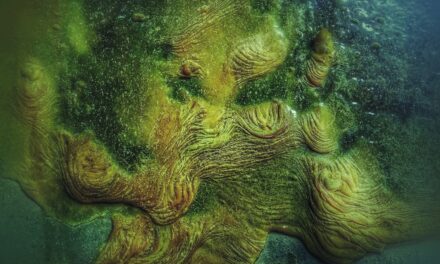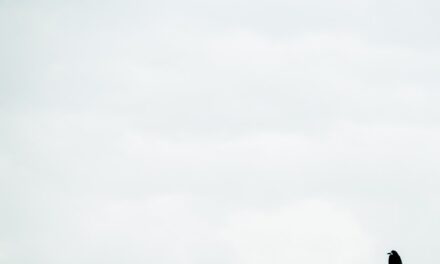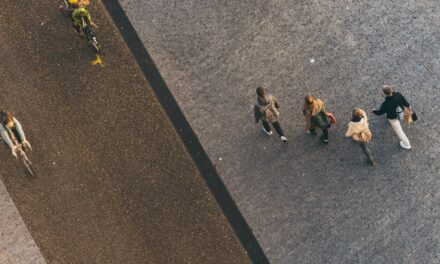The life of Andrea del Verrocchio, a pivotal figure in the Italian Renaissance, began in Florence around 1435. Born into a family of modest means, Verrocchio’s early years were marked by a burgeoning interest in the arts. His father, a goldsmith, likely influenced his initial foray into craftsmanship, instilling in him an appreciation for precision and detail.
This early exposure to the world of metalwork and design would later inform his artistic style, blending technical skill with creative expression. As a young man, Verrocchio was drawn to the vibrant artistic community of Florence, a city that was rapidly becoming the epicentre of Renaissance thought and creativity. Verrocchio’s formal education in the arts began when he entered the workshop of a prominent painter.
This apprenticeship provided him with foundational skills in painting and sculpture, allowing him to explore various techniques and materials. His education was not merely technical; it was also steeped in the humanist ideals that characterised the Renaissance. Verrocchio absorbed the teachings of classical antiquity, which would later manifest in his works through a focus on human anatomy, proportion, and emotion.
The combination of his early life experiences and rigorous training set the stage for a career that would leave an indelible mark on the art world.
Summary
- Early Life and Education: Born in Florence in 1386, received formal education and artistic training in his early years.
- Apprenticeship with Donatello: Spent several years as an apprentice to the renowned sculptor Donatello, learning the techniques and styles that would later define his own work.
- Influence on Leonardo da Vinci: Mentored and influenced the young Leonardo da Vinci, shaping his approach to art and sculpture.
- Notable Works and Techniques: Known for his lifelike sculptures, pioneering the use of perspective and naturalism in his work.
- Patronage and Influence: Gained the patronage of influential figures such as the Medici family, leading to widespread recognition and influence in the art world.
Apprenticeship with Donatello
Verrocchio’s apprenticeship with Donatello, one of the foremost sculptors of the early Renaissance, was a transformative period in his artistic development. Donatello’s workshop was a crucible of innovation, where young artists were encouraged to experiment with form and expression. Under Donatello’s tutelage, Verrocchio honed his skills in sculpture, learning to manipulate materials such as marble and bronze with remarkable finesse.
This experience not only refined his technical abilities but also instilled in him a deep appreciation for the emotive power of sculpture. The influence of Donatello on Verrocchio cannot be overstated. Donatello’s pioneering techniques, particularly his use of contrapposto and naturalism, resonated deeply with Verrocchio.
He adopted these principles, infusing his own works with a sense of movement and life that was revolutionary for the time. Moreover, Verrocchio’s exposure to Donatello’s exploration of narrative in sculpture inspired him to create pieces that conveyed complex stories and emotions. This apprenticeship laid the groundwork for Verrocchio’s future successes and established him as a leading figure in the Florentine artistic community.
Influence on Leonardo da Vinci
One of Verrocchio’s most significant contributions to art history is his role as a mentor to Leonardo da Vinci. When Leonardo entered Verrocchio’s workshop as a young apprentice, he was exposed to an environment rich in artistic innovation and experimentation. Verrocchio’s diverse range of skills—spanning painting, sculpture, and metalwork—provided Leonardo with a comprehensive education that would shape his own artistic journey.
The dynamic between the two artists was one of mutual respect and inspiration; Verrocchio’s guidance helped Leonardo develop his unique style while also pushing him to explore new ideas. The influence of Verrocchio on Leonardo is evident in several aspects of the latter’s work. For instance, Leonardo adopted Verrocchio’s emphasis on anatomical accuracy and emotional expression, which became hallmarks of his own masterpieces.
Additionally, Verrocchio’s innovative techniques in painting, such as the use of sfumato—a method of blending colours to create soft transitions—left a lasting impression on Leonardo. This interplay between mentor and protégé exemplifies how artistic traditions are passed down through generations, with each artist building upon the foundations laid by their predecessors.
Notable Works and Techniques
Verrocchio’s oeuvre is characterised by a remarkable diversity of works that showcase his mastery across various mediums. Among his most notable pieces is the bronze statue of David, which stands as a testament to his skill in sculpture. This work not only reflects the biblical hero’s triumph but also embodies the ideals of Renaissance humanism through its intricate detailing and lifelike representation.
The statue’s contrapposto stance imbues it with a sense of movement and vitality, demonstrating Verrocchio’s ability to breathe life into cold metal. In addition to sculpture, Verrocchio made significant contributions to painting, most notably through his work on “The Baptism of Christ.” This collaborative piece with Leonardo da Vinci highlights Verrocchio’s innovative techniques in composition and colour. The painting is notable for its harmonious arrangement of figures and its atmospheric perspective, which creates depth and realism.
Verrocchio’s ability to blend different artistic techniques—such as chiaroscuro and linear perspective—demonstrates his forward-thinking approach to art. His works not only reflect the aesthetic values of the Renaissance but also push the boundaries of artistic expression.
Patronage and Influence
Throughout his career, Verrocchio enjoyed the patronage of influential figures who recognised his talent and vision. His connections with powerful families such as the Medici played a crucial role in his success as an artist. The Medici were not only patrons but also avid collectors of art, providing Verrocchio with opportunities to create works that would adorn their palaces and public spaces.
This patronage allowed him to experiment with grander projects and solidified his status within Florence’s competitive art scene. Verrocchio’s influence extended beyond his immediate circle of patrons; he became a mentor to many aspiring artists who sought to learn from his expertise. His workshop became a hub for artistic innovation, attracting talents who would go on to make their own marks on the Renaissance.
The collaborative spirit fostered within his studio encouraged experimentation and dialogue among artists, leading to a flourishing of creativity that would define the era. Through his work and mentorship, Verrocchio not only shaped individual careers but also contributed to the broader evolution of Renaissance art.
Legacy and Impact on Renaissance Art
The legacy of Andrea del Verrocchio is profound and far-reaching, marking him as one of the key figures in the development of Renaissance art. His innovative techniques and commitment to realism set new standards for artists who followed in his footsteps. The emphasis he placed on human emotion and anatomical accuracy influenced generations of painters and sculptors, including luminaries such as Michelangelo and Raphael.
Verrocchio’s ability to blend technical skill with expressive depth created a template for future artists seeking to capture the complexities of human experience. Moreover, Verrocchio’s role as a teacher cannot be understated; he nurtured talent that would shape the course of art history. His workshop produced not only Leonardo da Vinci but also other notable artists who carried forward his teachings and philosophies.
The collaborative environment he fostered encouraged experimentation and innovation, contributing to the rich tapestry of Renaissance art. As such, Verrocchio’s impact extends beyond his individual works; he played an integral role in cultivating an artistic culture that celebrated creativity and exploration.
Personal Life and Relationships
While much is known about Verrocchio’s professional achievements, details about his personal life remain somewhat elusive. He was known to be somewhat reclusive, preferring the company of fellow artists over socialising within broader Florentine society. This inclination towards solitude may have allowed him to focus intently on his craft, dedicating himself fully to his artistic pursuits.
However, it is clear that he formed meaningful relationships within the artistic community, particularly with his apprentices who would go on to become significant figures in their own right. Verrocchio’s relationships were not limited to professional ties; he also had connections with influential patrons who shaped his career trajectory. His rapport with members of the Medici family provided him with opportunities that many artists could only dream of during that era.
These relationships were often symbiotic; while patrons sought out talented artists to enhance their public image through art, Verrocchio benefited from their support in terms of commissions and resources. This interplay between personal connections and professional success illustrates how intertwined these aspects were during the Renaissance.
Modern Recognition and Appreciation
In contemporary times, Andrea del Verrocchio is celebrated not only for his artistic achievements but also for his role in shaping the trajectory of Renaissance art. His works are housed in prestigious museums around the world, where they continue to captivate audiences with their beauty and technical prowess. Art historians have increasingly recognised Verrocchio’s contributions as foundational to understanding the evolution of artistic practices during this transformative period.
Moreover, exhibitions dedicated to Verrocchio have emerged in recent years, showcasing both his masterpieces and those created by his students. These exhibitions highlight not only his individual talent but also the collaborative spirit that characterised his workshop. As modern audiences engage with Verrocchio’s legacy, they gain insight into the rich tapestry of relationships and influences that defined Renaissance art—a testament to an artist whose impact continues to resonate through time.
If you are interested in exploring different artistic techniques, you may also enjoy reading about layering techniques in mixed media on Think of Art. This article delves into the process of combining paper, fabric, and found materials to create unique and textured artworks. Just like Andrea del Verrocchio, who was known for his innovative approach to sculpture and painting, experimenting with different materials can lead to exciting and unexpected results in your own artistic practice.
FAQs
Who was Andrea del Verrocchio?
Andrea del Verrocchio was an Italian Renaissance sculptor, painter, and goldsmith. He was also a teacher to some of the most renowned artists of the time, including Leonardo da Vinci.
What are some of Andrea del Verrocchio’s most famous works?
Some of Verrocchio’s most famous works include the bronze statue of David, the equestrian statue of Bartolomeo Colleoni, and the “Baptism of Christ” painting, which is believed to have been collaborated on by Leonardo da Vinci.
What was Verrocchio’s influence on Leonardo da Vinci?
Verrocchio’s influence on Leonardo da Vinci was significant, as he was Leonardo’s teacher and mentor. Under Verrocchio’s guidance, Leonardo developed his skills in painting, sculpture, and engineering.
What was Verrocchio’s style of art?
Verrocchio’s style of art was characterized by a sense of naturalism and attention to detail. His sculptures and paintings often displayed a high level of technical skill and a focus on capturing the human form with precision.
What is Verrocchio’s legacy in the art world?
Verrocchio’s legacy in the art world is significant, as he was not only a talented artist in his own right, but also a teacher who influenced the development of some of the greatest artists of the Renaissance, including Leonardo da Vinci. His contributions to the art world continue to be celebrated and studied to this day.



